| |
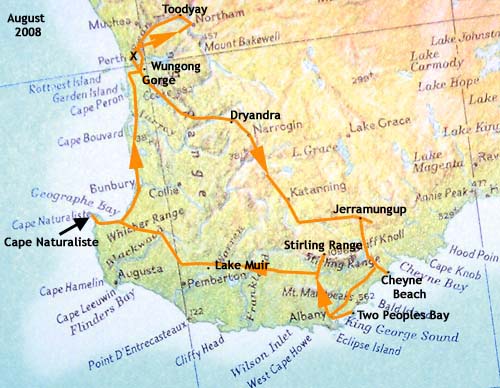 During our 10 days in southwestern Australia, we did a clockwise loop from Perth to Albany and return. Major stops: During our 10 days in southwestern Australia, we did a clockwise loop from Perth to Albany and return. Major stops:
- 3 days in Dryandra Woodlands, commuting from Narrogin
- visit to Fitzgerald River B&B, at edge of mallee, east of Jerramungup
- most of 3 days at Cheynes Beach & Waychinicup [rain much of time]
- afternoon & morning visits Two Peoples Bay / Little Beach, staying in Albany
- overnight at Stirling Range Retreat, with a visit to Porongorup Nat'l Park
- long drive towards the west, stopping at Lake Muir & vicinity
- a morning at Cape Naturaliste, and drive north to Perth (overnight Armadale)
- a morning at Wungong Gorge, midday loop Northam-Toodyay, back to Perth
|
|
From a birder's perspective, southwestern Australia offers 13-16 endemics (depending on your taxonomy) plus
3 near-endemics. Since we missed two of the recently-proposed splits
[Western Fieldwren, split from Rufous Fieldwren & Western
Shrike-tit, split from Crested Shrike-tit], let's talk about this group
of desirable birds as 16 endemics/near-endemics, without the proposed splits. We saw 15 of those. Our efforts to locate them relied heavily on Frank O'Connor's fine web site about birding in southwestern Australia, and he graciously answered extra questions before our trip.
Among
the 'sweet sixteen' are two species of black-cockatoo. Each occurs
rather erratically, often in large and noisy flocks (above), and the
inset shows that this flock was Long-billed [Baudin's] Black-Cockatoo. Oddly, we encountered Long-bills at a variety of spots, but had Short-billed only at Wungong Gorge. |
Three more of the southwestern endemics are psittacids. Red-capped Parrot (near right) is colorful, common, and widely distributed [this was in the parking lot of the Narrogin Motel], but Western Rosella (far right) was skittish, elusive, and did not give us a good shot at photos [this bad photo was at Stirling Range].
We actually missed Western Corella
entirely around Lake Muir, their 'usual' haunt. We had anticipated
they'd be foraging out in fields, but fields were hard to come by in
the thick eucalypt woods around Lake Muir. But we found hundreds of the
northern subspecies, flocking with Little Corellas, along the Avon
River near Toodyay, northeast of Perth, on our final day (flight shot,
below). |
|
|
|

|
|
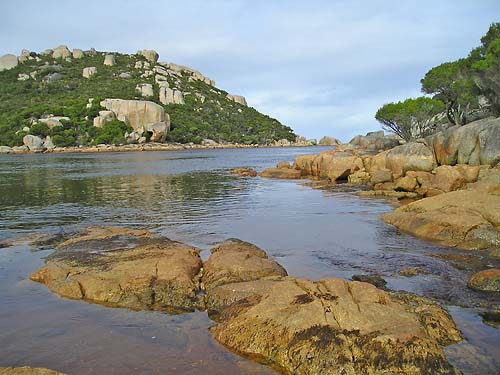 There
are three high-priority endemics that are major skulkers. Each is an
incredible challenge to actually see. All three inhabit the coastal
heath scrub east of Albany, such as at Waychinicup (above), set on an
incredible beautiful bay (right). Each bird has a different subhabitat
within this heathland and one, Western Whipbird, is
actually more common in the mallee country inland. We stayed at a bed
& breakfast on the edge of Fitzgerald River Nat'l Park, and used a
tape to get a response from a Western Whipbird along the entrance road,
in a patch of remnant mallee, but our views of it were poor (flying
across the road); we could not see it when it was singing inside the
thick mallee. There
are three high-priority endemics that are major skulkers. Each is an
incredible challenge to actually see. All three inhabit the coastal
heath scrub east of Albany, such as at Waychinicup (above), set on an
incredible beautiful bay (right). Each bird has a different subhabitat
within this heathland and one, Western Whipbird, is
actually more common in the mallee country inland. We stayed at a bed
& breakfast on the edge of Fitzgerald River Nat'l Park, and used a
tape to get a response from a Western Whipbird along the entrance road,
in a patch of remnant mallee, but our views of it were poor (flying
across the road); we could not see it when it was singing inside the
thick mallee.
The other two are probably the most
important species on a southwest Australia trip. We spent three days
searching the coastal heath at Cheynes Beach, Waychinicup, and Two
Peoples Bay for these birds. Because they are found in parks, and one
is endangered, we did not use tapes to attract these birds.
Taping is not legal in some parks, and might be considered unethical.
Rather, we learned their vocalizations from the tapes, but tried to
locate them through stealth or patience:
- Noisy Scrubbird:
this endangered species was thought to be extinct until rediscovered at
Two Peoples Bay in 1961. It is actually now reasonably common at this
site, and at Cheynes Beach and Waychinicup, but is a significant
challenge to see. Our best views were of birds running across tracks at
Cheynes Beach, and I managed to aim the camera at one once (below left;
yellow arrow points to a blob with a tail, which is a singing bird deep
inside a bush, facing away). We had 3 singing birds at Cheynes Beach,
and one territory even adjoined our rented cabin there, but it took
hours to actually see it. We heard another at Waychinicup, and two more
at Two Peoples Bay, but made no efforts to see those in the dense
thickets.
- Western Bristlebird:
we were disappointed to not even hear a single bird at Cheynes Bay,
despite directions to two territories, but the rain encountered there
may have dampened its singing. Our option then was to get to the Little
Beach car park at Two Peoples Bay Nat'l Park at dawn, and watch up the
entrance road, hoping one would run across. At one point just after
dawn something did hop into the road (below center): a Western Gray
Kangaroo which, given that we were not expecting it and were searching
for a little bird, truly looked like Tyrannosaurus rex! At 7
a.m., a bristlebird was heard singing to our left. At 7:07, one ran
across the dirt road to the triangular 'island' of brush in the center
of the car park, followed by its mate at 7:10. I got some close, quick
views at the edge of that island, and one even briefly fed at the edge
of the car park (below right). Nice views — terrible photos.
|
|
|
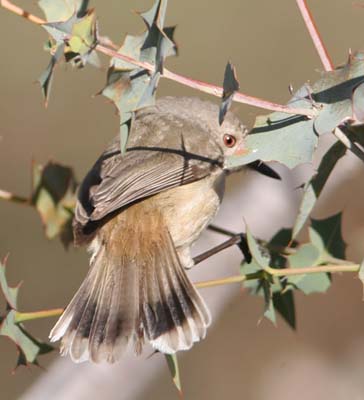 Fairy-Wrens
are a classic Australian family, providing endless hours of
entertainment to the birder, and two species are endemics here: Blue-breasted Fairy-Wren
(above) and Red-winged Fairy-Wren. Most species are quite difficult to
photograph, at least during a trip with limited time, and I was lucky
to get a shot of a male and female together. We never managed any
photos of Red-winged, although it was seen at several sites. Fairy-Wrens
are a classic Australian family, providing endless hours of
entertainment to the birder, and two species are endemics here: Blue-breasted Fairy-Wren
(above) and Red-winged Fairy-Wren. Most species are quite difficult to
photograph, at least during a trip with limited time, and I was lucky
to get a shot of a male and female together. We never managed any
photos of Red-winged, although it was seen at several sites.
Thornbills
are more difficult for the visiting birder; they can be tough to see
well in the canopy or undergrowth, and difficult to identify. The
endemic, Western Thornbill, proved to be reasonably common, but I
didn't get a photo. I did photograph Inland Thornbill (left) in the undergrowth at Dryandra Forest. It has a wide range throughout the dry western two-thirds of Australia.
Treecreepers are another Australian family. Rufous Treecreeper
(below), a near-endemic to the southwest, was locally common within
Dryandra Forest. Once we learned the calls it was actually more common
than we had initially thought. |
|
|
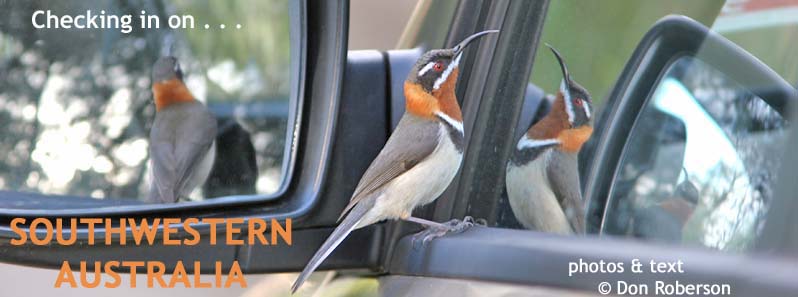
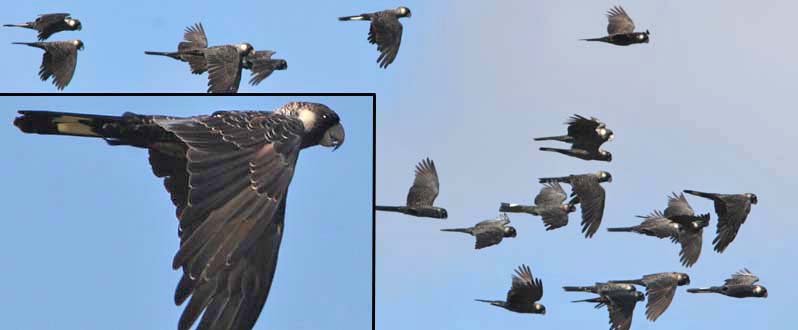
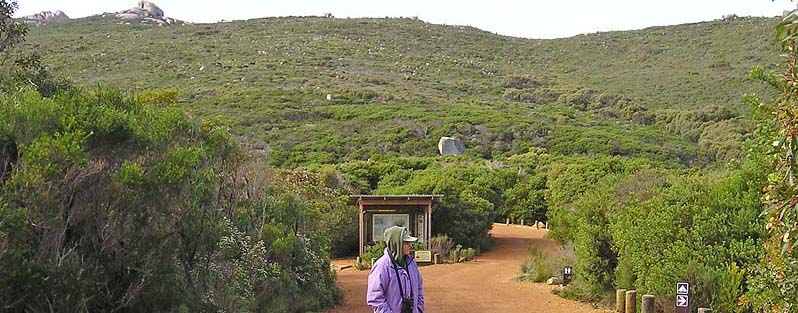
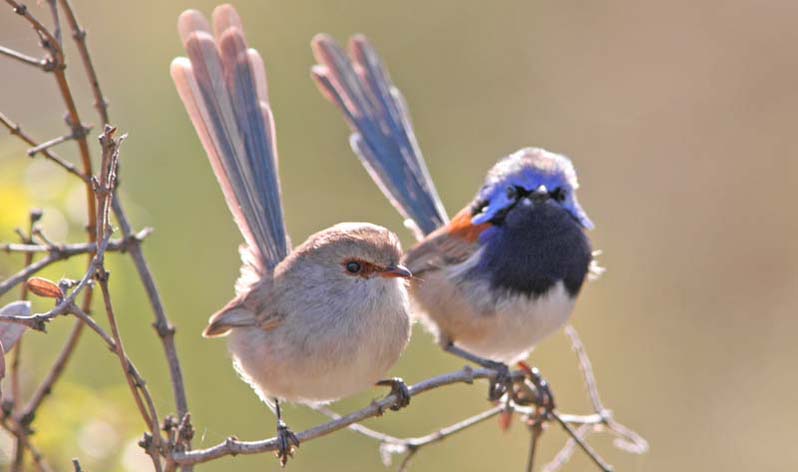
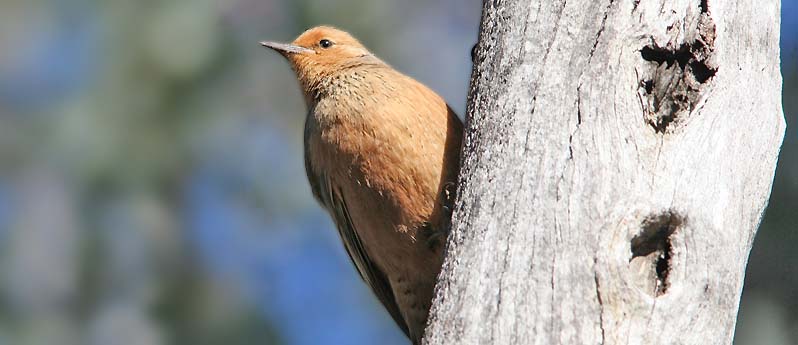
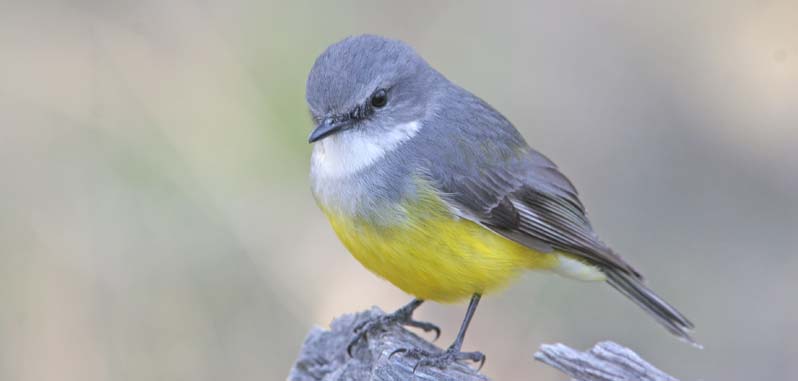

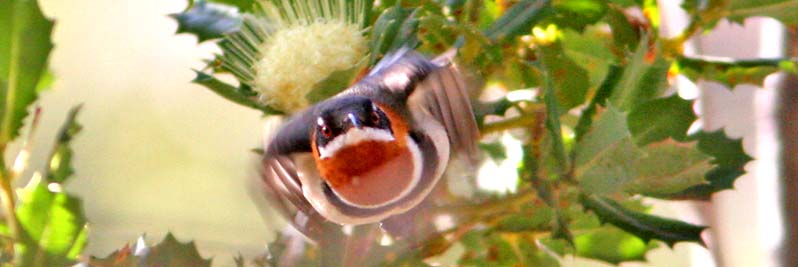
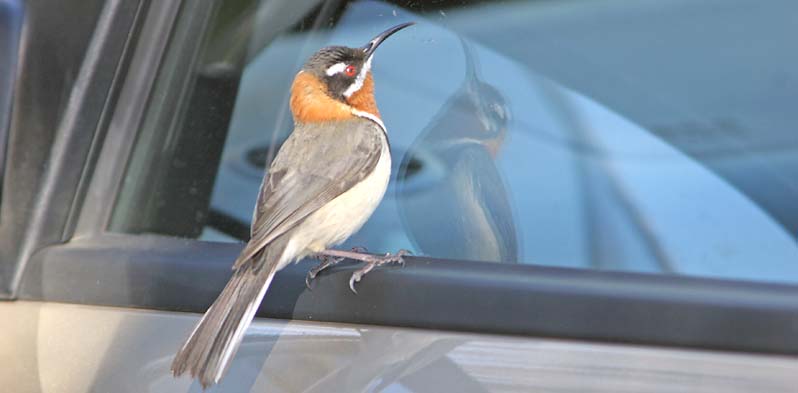
 During our 10 days in southwestern Australia, we did a clockwise loop from Perth to Albany and return. Major stops:
During our 10 days in southwestern Australia, we did a clockwise loop from Perth to Albany and return. Major stops: 


 There
are three high-priority endemics that are major skulkers. Each is an
incredible challenge to actually see. All three inhabit the coastal
heath scrub east of Albany, such as at Waychinicup (above), set on an
incredible beautiful bay (right). Each bird has a different subhabitat
within this heathland and one, Western Whipbird, is
actually more common in the mallee country inland. We stayed at a bed
& breakfast on the edge of Fitzgerald River Nat'l Park, and used a
tape to get a response from a Western Whipbird along the entrance road,
in a patch of remnant mallee, but our views of it were poor (flying
across the road); we could not see it when it was singing inside the
thick mallee.
There
are three high-priority endemics that are major skulkers. Each is an
incredible challenge to actually see. All three inhabit the coastal
heath scrub east of Albany, such as at Waychinicup (above), set on an
incredible beautiful bay (right). Each bird has a different subhabitat
within this heathland and one, Western Whipbird, is
actually more common in the mallee country inland. We stayed at a bed
& breakfast on the edge of Fitzgerald River Nat'l Park, and used a
tape to get a response from a Western Whipbird along the entrance road,
in a patch of remnant mallee, but our views of it were poor (flying
across the road); we could not see it when it was singing inside the
thick mallee. 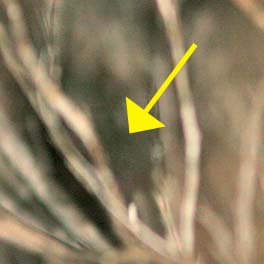


 Fairy-Wrens
are a classic Australian family, providing endless hours of
entertainment to the birder, and two species are endemics here: Blue-breasted Fairy-Wren
(above) and Red-winged Fairy-Wren. Most species are quite difficult to
photograph, at least during a trip with limited time, and I was lucky
to get a shot of a male and female together. We never managed any
photos of Red-winged, although it was seen at several sites.
Fairy-Wrens
are a classic Australian family, providing endless hours of
entertainment to the birder, and two species are endemics here: Blue-breasted Fairy-Wren
(above) and Red-winged Fairy-Wren. Most species are quite difficult to
photograph, at least during a trip with limited time, and I was lucky
to get a shot of a male and female together. We never managed any
photos of Red-winged, although it was seen at several sites. The
final three southwestern endemics are two robins and a honeyeater. Both
robins were widespread but never common, and could be quite tame when
located. Western Yellow Robin (above) preferred wooded habitats [this photo in Stirling Range] white White-breasted Robin (right) liked the edge of scrub on coastal heathlands [this photo Cheynes Beach].
The
final three southwestern endemics are two robins and a honeyeater. Both
robins were widespread but never common, and could be quite tame when
located. Western Yellow Robin (above) preferred wooded habitats [this photo in Stirling Range] white White-breasted Robin (right) liked the edge of scrub on coastal heathlands [this photo Cheynes Beach].